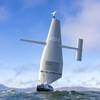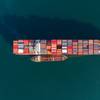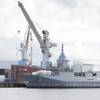New PACFLT Commander Addresses Goals for Pacific AOR
The strategy is one that strikes a balance between what he called “high-end warfare” and “low-end warfare” that is playing out in the Pacific area of responsibility that includes Iraq, Afghanistan and the southern Philippines. He characterized “high end” by acknowledging the deterrent and dissuasion effect the Navy has with its forward forces in the Pacific, mentioning that in 150 years, the Navy has contributed over and over to the security of that region. In speaking about the “low end,” Willard pointed to the importance of the Pacific Partnership mission and the deployment of the San Diego-based USS Peleliu (LHA 5).
“The purpose of Pacific Partnership is to demonstrate our resolve and establish conditions, particularly in Southeast Asia, that foster goodwill, that foster improved lifestyle, that foster improved security and change the face a little bit of the United States military when a gray hull pulls up next to a foreign shore,” Willard said. The Pacific Partnership mission combines host nation medical personnel, partner nation military medical personnel and non-governmental organizations to provide medical, dental, construction and other humanitarian-assistance programs ashore and afloat in Southeast Asia and Oceania.
“Our military is one that everyone knows is there to deter and react, but it is also there to help,” he added. The Pacific Partnership along with the homeporting of USS Carl Vinson (CVN 70) to San Diego and the addition of the new littoral combat ship are some examples Willard gave that point to the Navy’s shift of emphasis to the Pacific.
“It’s become increasingly apparent that the Pacific region is a key to global security,” Willard said. “As a result of last year’s Quadrennial Defense Review, it was decided that we would shift an aircraft carrier to the West Coast as well as change the ratio of submarines between East to West.” He said the change in the global security environment post Cold War and the results of September 11 and the concerns regarding emerging nations in the world – are all factors that influenced the shift. Willard stressed the importance of San Diego in the growth of the Pacific Fleet.
“We have just a few fleet concentrations in the United States, and San Diego is a prominent one of them,” he said. “When you consider the split of ships east to west, the majority of our forces are located here.” He added the majority of the Navy’s West Coast carriers, air wings, surface ships and amphibious ships are located in San Diego. “San Diego plays a huge role strategically, and as a wonderful host, frankly, for the Navy and the Marine Corps in the region,” he said. Willard assumed command of the Pacific Fleet in May, replacing Adm. Gary Roughead.
By Mass Comunication Specialist 2nd Class Tim Wightman, Navy Region Southwest Public Affairs













